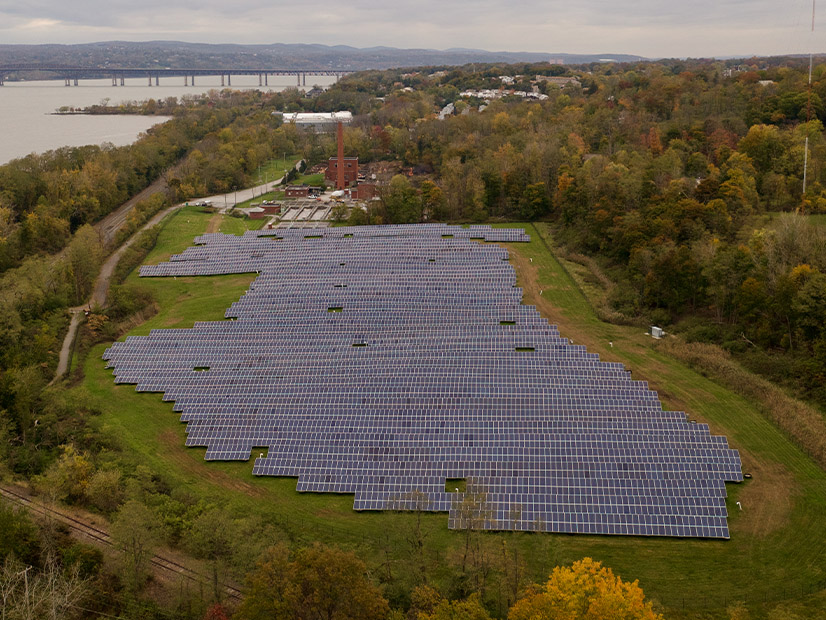
An appeals court has rejected an attempt to derail New York state’s streamlined permitting process for large renewable energy projects.
Several upstate New York towns and ornithological organizations argued in a June 2021 petition that the state Office of Renewable Energy Siting violated state law as it drew up the set of uniform standards and conditions it adopted earlier in 2021.
A county-level judge ruled in favor of ORES later in 2021 and an Appellate Division court rejected the petition in a ruling issued Thursday. Because the ruling was unanimous, there is limited avenue to appeal to the state’s highest court.
New York codified renewable energy goals through its landmark Climate Leadership and Community Protection Act in 2019. The Accelerated Renewable Energy Growth and Community Benefit Act of 2020 established ORES to speed up the buildout of renewables by creating a standardized environmental review and permitting process for projects with capacity of 25 MW or larger.
Developers of projects sized 20 to 25 MW can also opt in.
After ORES determines an application to be complete, it has one year to issue a final decision on a siting permit, or six months if the project is on a brownfield.
Local government and community groups are allowed to provide input and participate, but ORES leads the process. Local ability to delay and thwart projects has contributed to New York’s reputation as a slow, expensive place to develop renewables.
New York has a strong home-rule tradition, and an indeterminate but vocal percentage of its residents are opposed to utility-scale wind and solar installations. ORES’ ability to override local laws does not sit well with them.
In their court challenge, the six towns and seven organizations sought annulment of the regulations through which ORES accomplishes its mission.
They said the state had given power plant siting authority to an understaffed and inexperienced new agency that outsourced the writing of its regulations to an energy industry consultant that represented 25 wind and solar developers in New York at the time.
In drawing up the regulations, the petition charged, ORES disregarded the requirements to avoid or minimize adverse environmental impact and to allow meaningful involvement of citizens.
ORES gave itself the power to authorize clear-cutting of forests, level hilltops, destroy wildlife habitat, kill birds and bats, interfere with bird migration and eliminate farmland, the petition states, and in so doing, to degrade the character of rural New York.
Thursday’s appellate ruling rejected the towns’ and organizations’ challenge and most of the arguments on which it was based.
It found that ORES did classify the rule-making process incorrectly, as the petition alleged, but said that was not cause to invalidate the result of that process.
The ruling also rejected the claim that ORES had not fully considered the environmental implications of its rule making or followed the correct procedure with them. “A review of the vast record reveals that ORES took a thorough and hard look at the potential negative environmental impacts associated with the proposed regulations,” the judges wrote.
The judges also rejected the assertions that ORES had exceeded its statutory authority and that ORES’ ability to pre-empt local laws violates the home rule provision of the state constitution.
“Unreasonably burdensome local laws would thwart the ultimate goals of the legislation,” they wrote.
ORES did not return a request for comment for this story.
On Thursday, the same day the ruling was issued, Gov. Kathy Hochul announced the latest siting approval by ORES — a 94-MW solar farm proposed by EDF Renewables North America in a rural area of southwest New York.
It was the 13th permit ORES has issued since 2021. Those 13 projects have a combined nameplate capacity of more than 2.1 GW.
The case was brought by the American Bird Conservancy, Save Ontario Shores, Cambria Opposition to Industrial Solar, Clear Skies Above Barre, Delaware-Otsego Audubon Society, Genesee Valley Audubon Society, Rochester Birding Association, and the towns of Cambria, Copake, Farmersville, Malone, Somerset and Yates.
Named as defendants along with ORES were its director, Houtan Moaveni, the state itself and the state Department of State.



